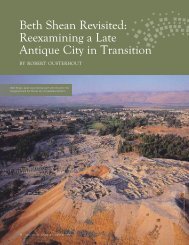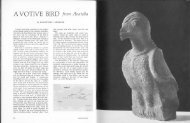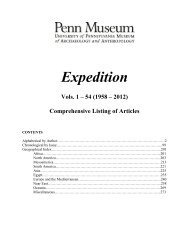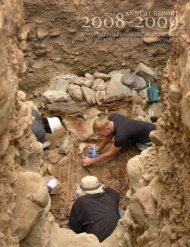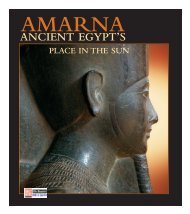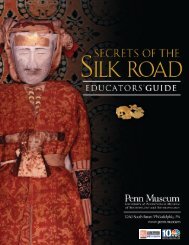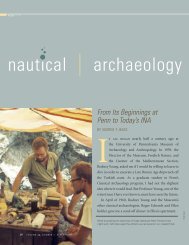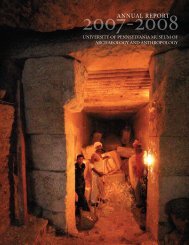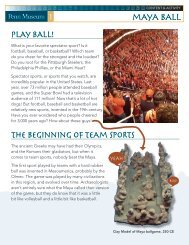Ancient History Math Mystery
Ancient History Math Mystery
Ancient History Math Mystery
You also want an ePaper? Increase the reach of your titles
YUMPU automatically turns print PDFs into web optimized ePapers that Google loves.
The Chinese Rotunda at the Penn<br />
Museum has one of the world’s largest,<br />
unsupported masonry domes. That<br />
means there are no steel or supporting<br />
trusses within the dome to hold it up.<br />
The weight of the dome is carried by the<br />
eight arches that encircle the rotunda,<br />
and by the natural forces of compression,<br />
tension, gravity, and the normal force.<br />
The design of the Museum’s dome<br />
was based on the design of a much<br />
older and larger dome called the<br />
Pantheon, an ancient Roman temple.<br />
Look carefully at the apex of both of these<br />
domes. The apex is the highest point of the<br />
dome. The opening located at the apex is<br />
called an oculus. Oculus means eye in Latin.<br />
The oculus is not only a way to bring<br />
light into a domed structure, but it<br />
also lightens the weight of the roof.<br />
1<br />
<strong>Math</strong> of Domes<br />
Above, the Chinese<br />
Rotunda at the Penn<br />
Museum. Left, interior<br />
of the Pantheon.<br />
1) apex<br />
2) oculus<br />
3) diameter<br />
4) radius<br />
5) circumference<br />
6) area<br />
CONTENT & ACTIVITY<br />
vocAbuLARy




